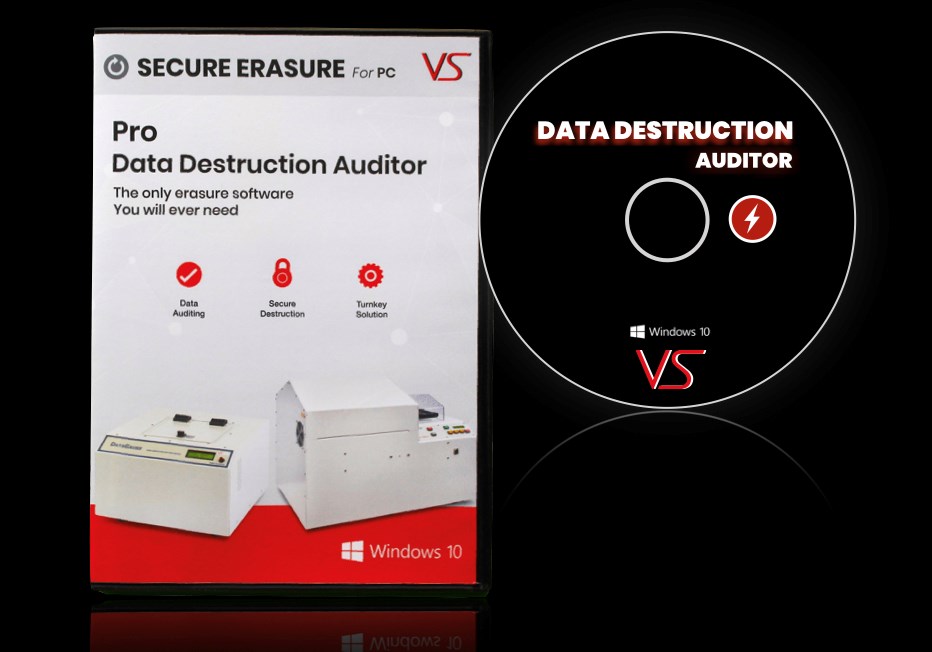Best Practices for Data Destruction to Strengthen Your Cyber Security Structure
Wiki Article
The Significance of Effective Data Damage Practices in Safeguarding Sensitive Information and Ensuring Computer System Security
In a period where data violations are increasingly common, the relevance of reliable information damage techniques can not be overemphasized. Carrying out robust data damage approaches not only mitigates these dangers however also straightens with lawful compliance demands, making certain that organizations maintain their reputation and foster customer count on.Understanding Data Devastation
Recognizing information devastation is critical in today's digital landscape, where delicate info can quickly be compromised. Effective information devastation involves not merely deleting files yet ensuring that information is irretrievable with comprehensive techniques. This procedure is important for organizations that manage personal client details, copyright, or interior records, as any breach can lead to serious economic and reputational repercussions.
Information damage encompasses different methods, consisting of shredding physical media, degaussing magnetic storage space devices, and using software-based services that overwrite information numerous times. Each technique offers a specific function and has to line up with the sensitivity of the information being taken care of. Physical devastation is often liked for tough drives containing highly private data, while software techniques might be adequate for less delicate info.
Moreover, adhering to market requirements and policies, such as the General Data Security Guideline (GDPR) or the Wellness Insurance Policy Mobility and Liability Act (HIPAA), is crucial for conformity and to mitigate legal dangers. Organizations has to establish a robust data destruction plan, train staff members on finest practices, and regularly audit their treatments to ensure that all sensitive information is thrown away safely and efficiently.
Risks of Inadequate Practices
Insufficient information destruction techniques subject companies to substantial dangers that can have significant repercussions. When delicate info is not correctly thrown away, it remains vulnerable to unauthorized gain access to, which can result in information breaches and identification burglary. Such cases not only jeopardize the safety of individuals yet additionally tarnish the company's online reputation, resulting in a loss of client depend on and potential financial effects.Moreover, regulative compliance is increasingly strict in many markets. Failure to stick to information devastation regulations can result in significant penalties and lawsuits versus organizations. These penalties can divert and stress financial resources focus from core organization operations.
Additionally, the abuse of residual information can bring about copyright burglary or business reconnaissance, threatening competitive advantages (data destruction). The impact of insufficient information damage prolongs beyond instant economic losses; it can likewise result in lasting damages to brand name honesty and market setting

Organizations need to acknowledge that information safety and security is not solely about avoiding breaches; it also includes the responsible monitoring of information throughout its lifecycle. Ignoring efficient information damage protocols can have tragic effects, emphasizing the necessity for durable actions to mitigate these dangers.
Ideal Practices for Data Devastation
Applying effective information destruction methods is vital for securing delicate info and keeping compliance with regulative requirements. Organizations must adopt a multi-faceted method to make certain that information is irretrievable, therefore avoiding unauthorized gain Web Site access to and prospective violations.First, information ought to be categorized based on level of sensitivity, permitting organizations to use suitable destruction methods tailored to the level of risk. For electronic data, making use of software-based data-wiping tools that abide by market requirements can properly overwrite existing data. Physical devastation approaches, such as shredding or degaussing, are critical for gadgets that save delicate info, making certain full eradication.
Establishing a clear information retention plan is crucial, outlining how much time various kinds of information need to be kept before devastation. Routine audits of data storage systems are likewise required to recognize unneeded or obsolete information needing removal.
Furthermore, training staff members on the importance of information devastation and the specific procedures to adhere to fosters a culture of protection within the company. Ultimately, maintaining documentation of information devastation processes gives accountability and sustains compliance with interior plans and exterior policies. By sticking to these ideal methods, companies can dramatically mitigate the risks related to information exposure.
Legal and Conformity Factors To Consider

Failing to abide by these guidelines can lead to serious penalties, including substantial penalties and reputational damages. Organizations needs to apply a robust information damage policy that lines up with these legal structures and supplies clear guidelines on the proper techniques of data disposal, whether physical shredding or digital cleaning.
Additionally, maintaining documents of information destruction activities is crucial for showing conformity throughout audits or examinations. By prioritizing legal and content conformity factors to consider, companies can boost their information security stance and foster depend on with stakeholders and clients, ultimately adding to a much more secure data administration atmosphere.
Benefits of Effective Data Devastation
Reliable information devastation methods prolong past simple compliance; they offer substantial advantages to companies that prioritize them. By making certain that sensitive details is irretrievably ruined, companies mitigate the threat of data breaches and the possible financial effects related to them. This proactive technique not only safeguards versus unauthorized gain access to but also improves the overall trustworthiness of the organization in the eyes of stakeholders and clients.Applying robust information damage methods, such as physical destruction of storage space devices or advanced information wiping methods, adds to the conditioning of a company's cybersecurity posture. data destruction. It reduces the likelihood of copyright theft and safeguards proprietary details, consequently keeping an one-upmanship out there
.webp)
Conclusion
Finally, efficient information devastation methods are important for guarding delicate details and boosting general computer protection. By applying extensive methods such as shredding, software application, and degaussing overwriting, organizations can reduce the dangers related to unapproved accessibility and data violations. Adherence to regulative standards, consisting of GDPR and HIPAA, more strengthens compliance and safeguards versus legal effects. Inevitably, a commitment to durable information damage approaches fosters a society of obligation, thereby enhancing a company's cybersecurity position and maintaining client trust.
Report this wiki page